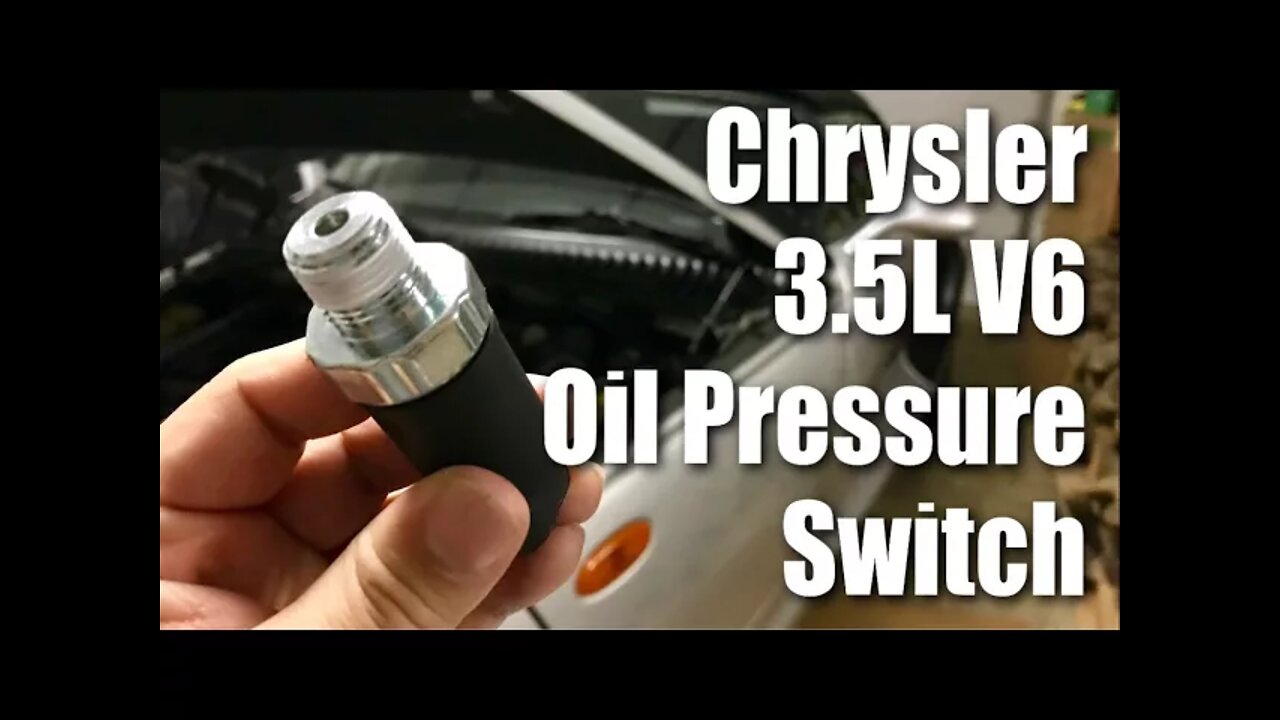Premium Only Content

How to replace the oil pressure sensor on the 2001 3.5L Chrysler V6 engine in my Plymouth Prowler
Get the Oil Pressure Sending Unit here... http://geni.us/oTWHL
Get the Deep Well Socket here... http://geni.us/e2cR
Get Plymouth Prowler accessories here... http://geni.us/nviD0Y
Join this channel to help me bring you more vids...
https://www.youtube.com/channel/UCS-ix9RRO7OJdspbgaGOFiA/join
Join the free von Panda group here... https://panda-research-institute.mn.co
Get Peter von Panda gear here... https://petervonpanda.storenvy.com/
Instagram... https://www.instagram.com/petervonpanda/
As an Amazon Associate I earn from qualifying purchases.
The Plymouth Prowler, later the Chrysler Prowler, is a retro-styled production car manufactured and marketed from 1997 to 2002 by DaimlerChrysler, based on the 1993 concept car of the same name.
A single overhead camshaft was a major addition to the lineup for 1993. Introduced with the 3.5 L engine, this basic design spawned 3.2 L and new 4.0 L variants as well as the DOHC 2.7 L Chrysler LH engine. All but the 2.7 and high-output 3.5 were produced at Trenton Engine in Trenton, Michigan.
The SOHC engine used an engine block that was very similar to its pushrod ancestors. But the front of the block was modified for the camshaft drive, and the heads were entirely different. One major change was that the SOHC engine was originally designed for the longitudinal placement of the Chrysler LH platform, rather than the transverse engine design of the K-cars and minivans. Since the bottom end was the same, the engine could be produced on the same assembly line in Trenton as the pushrod engine.
1993–97 3.5 L engines are a non-interference engine meaning that the valves will not collide with the pistons in the event of a timing belt failure. The 1998–2001 3.2 L, the 1998–2010 3.5 L, and the 2007–2011 4.0 L engines are interference designs.
3.5 Edit
This 3,518 cc (3.518 L; 214.7 cu in) engine was a version of the 3.3 but with a larger bore of 96 mm and the important addition of overhead cams. The 3.5L version has an intake arrangement with two separate manifolds and throttle bodies connected with a crossover valve. This provides better low and midrange torque. The four valves per cylinder are driven by a single overhead camshaft as opposed to the conventional DOHC arrangement for multivalve engines. Another difference with the 3.5 as opposed to the 3.3 is that it has a timing belt, not a timing chain. The water pump is also driven by the timing belt on the 3.5, whereas on the 3.3, the accessory belt drives it.
At its debut in 1993, this engine produced 214 hp (160 kW) and 221 lb·ft (300 Nm) from an iron block and aluminium cylinder heads. The 3.5 L engine was redone entirely of aluminum in 1999 as the EGG high output, producing 247–253 hp (190 kW) at 6500 rpm with 250 lb·ft (339 Nm) of torque at 4000 rpm. Output from 2002–2004 for the standard output EGJ is 234 hp (174 kW) at 6000 rpm with 241 lb·ft (327 Nm) of torque at 4400 rpm. Also for 2002–2004, the EGK 3.5 L Special was built exclusively for the 300M Special, producing 255 hp and 258 lb·ft.
The EGJ was built in Trenton, MI. The EGG was built in Kenosha, WI. The EGK was discontinued in 2004.
The 3.5 L version is no longer in production as of 2011, replaced by the newer Pentastar 3.6 V6
Vehicles using the 3.5 include:
EGE
1993-1997 Dodge Intrepid
1993-1997 Chrysler New Yorker
1993-1997 Chrysler LHS
1993-1997 Chrysler Concorde
1993-1997 Eagle Vision
1997 Plymouth Prowler
EGF
2007-2010 Chrysler Sebring
2008-2010 Dodge Avenger
2009-2010 Dodge Journey
EGJ
2002-2004 Chrysler Concorde
2002-2004 Dodge Intrepid
EGG
2004-2006 Chrysler Pacifica (CS)
2005-2010 Chrysler 300
2005-2008 Dodge Magnum SXT
2006-2010 Dodge Charger
2009-2010 Dodge Challenger SE
2000-2004 Dodge Intrepid R/T and SXT
1998-2001 Chrysler LHS
1999-2004 Chrysler 300M
2002-2004 Chrysler Concorde Limited
1999-2002 Plymouth Prowler
EGK
2002-2004 Chrysler 300M Special
-
 0:50
0:50
Peter von Panda
1 year agoRevolutionary Portable Fire Starter Perfect for Camping and Outdoor Adventures!
738 -

Stephen Gardner
1 hour ago🚨YES! Trump DID IT + Bombshell SCOTUS ruling!
5994 -
 LIVE
LIVE
Edge of Wonder
3 hours ago4 Alien Species Revealed by Congressman & AI Creates ‘New Physics’
375 watching -
 LIVE
LIVE
Mally_Mouse
21 hours agoFriend Friday!! 🎉 - Let's Play! - Goose Goose Duck
86 watching -
 LIVE
LIVE
Spartan
2 hours agoRanked + Octopath Traveler 2
62 watching -
 LIVE
LIVE
GrimmHollywood
8 hours ago🔴LIVE • GRIMM HOLLYWOOD • RUMBLE SPARTANS HALO NIGHT • GRIMMDY GAMES • NEW GRIMM FILM
82 watching -
 43:26
43:26
BonginoReport
9 hours agoThe Future Is Bright w/ GOP Youth Advisory Chair CJ Pearson - Hayley Caronia (Ep.118)
67.2K19 -
 LIVE
LIVE
MissesMaam
1 hour ago*Spicy Sips* Friend Friday with Mally_Mouse and Friends!!! 💚✨
79 watching -
 LIVE
LIVE
ZWOGs
4 hours ago🔴LIVE IN 1440p! - Games w/ Maam, Kingdom Come Deliverance, & More - Come Hang Out!
19 watching -
 1:17:08
1:17:08
Kim Iversen
4 hours agoNetanyahu Declares WAR On Algorithms | Zionists Demand Megyn Kelly's Head
38.7K128